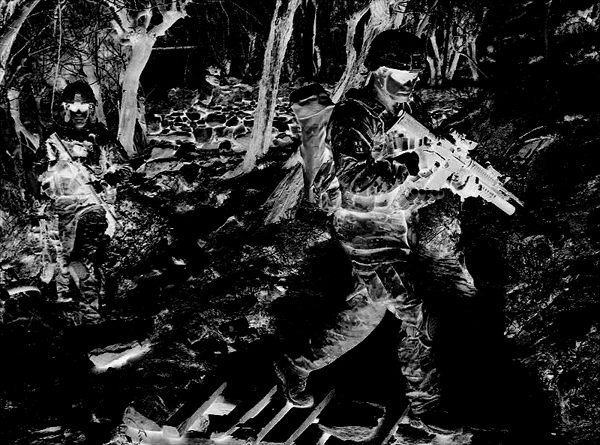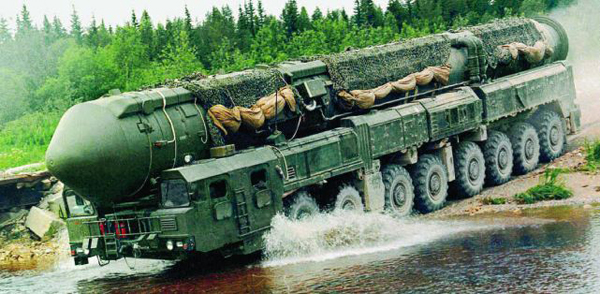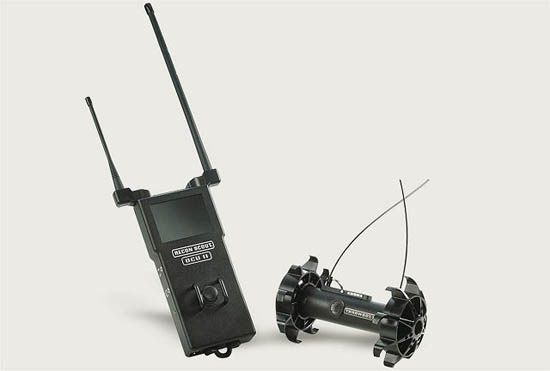Search
Recent comments
- chez bibi's....
14 hours 45 min ago - might is right.....
15 hours 52 min ago - revenge......
17 hours 30 min ago - on life support....
17 hours 39 min ago - moving on....
18 hours 26 min ago - in finland....
18 hours 31 min ago - a mosaic....
18 hours 34 min ago - the mad house....
20 hours 19 min ago - RT metro....
23 hours 4 min ago - EU piglets...
1 day 11 hours ago
Democracy Links
Member's Off-site Blogs
spending spree on killing...

The United States' military expenditures today account for about 40 percent of the world total. In 2012, the US spent some $682bn on its military - an amount more than what was spent by the next 13 countries combined.
Now that the war in Iraq is over and the withdrawal of US troops from Afghanistan will be complete in 2014, the stage might therefore appear to be set for a decrease in US defence spending. Even in Washington DC, many have argued that the defence budget can be cut substantially and the resulting "peace dividend" could be diverted to more pressing domestic concerns, such as dealing with the nation's continuing economic problems.
However, a battle to ward off cuts to the Pentagon's budget has begun and the way things are going, it seems likely that the US will have the smallest drawdown or reduction of the military budget after a period of conflict since World War II - in comparative terms, smaller than after Vietnam, Korea and the end of the Cold War.The Pentagon's joint chiefs of staff have appeared before Congress warning of dire results from the impacts of sequestration, a requirement to reduce defence spending by $500bn over 10 years that grew out of a 2011 budget deal between President Obama and Congress. In March, sequestration led to a $41bn cut in 2013 defence spending.
http://www.aljazeera.com/programmes/peopleandpower/2013/04/2013424113558268754.html
------------------------
Here we revisit ancient history, back to the dawn of civilisation, when people used to fight with sticks of wood. After this, people trumpeted to make the walls of Jericho fall... Rarely wars are fought for "defense", but mostly are the result of self-interests and greed, in which we always blame the other side for making us do it... We need excuses — including calling god on our side — Sometimes these excuses in defence are valid, more often they are not...
http://www.yourdemocracy.net.au/drupal/node/1107
... We remember the uniforms of war. Up to the 19th century, uniforms were designed to identify the enemy in contrast with one's own troops on the battlefields. The red coats are the Poms, the blue uniforms are our own. We fight at 200 paces with volleys of inaccurate shrapnel... Since WWI, the uniforms have been designed to make soldiers as invisible as possible in order to minimise the numbers of casualties.
Instead of a thousand dead, many millions soldiers died. This could be seen as a paradox. No, it's simple. As soldiers could hide, conflicts lingered on beyond one singular battle, and became one giant cat and mouse game in which suicidal assaults would have provided some relief for desperate men.
As the purpose of war became more stupid, the strength of armament increased. Gas, guns, bigger bombs, cluster bombs, stronger explosives, atom bombs... By then one could see that the annihilation of the planet was on the card. New device had to be invented to wage wars in a more minimalist way... Big toys are still on the horizon but they are mostly used for peacock displays, while the really bum fights is done in "miniature"...
Drones are an extension of model planes and German V1 rockets... Drones come in many shape and sizes... From the sheer power of a fully armed bomber the size of a fighter jet to a tiny 4-rotor thingy one can buy at Paddy's market for 20 bucks — including onboard camera transmitting images in MP3.
The miniaturisation of warfare instruments is quite amazing... Here we have little mechanical spying (soon to come: the exploding ones) critters that can roll into spaces my roaming huntsman spiders could not fit in... Even the soldier's badges are designed to be seen only by the friendly side (specific infrared frequency)... The soldier has no visible identification to the enemy... Actually, the entire outfit is more or less invisible in most conditions, except when hit in a fluorescent paint-ball game or when blood oozes from unfortunate wounds.
Meanwhile the Russians still have big ballistic missiles, on trucks, that we hope will never be launched since the USA has no defence against them, according to serious reports... This is due to the missiles' ability to avoid detection and whizz around by changing course to avoid destruction should they be detected...

Now... Is saving the world from our stupidity worth it?... Who knows... I guess so.
The number of casualties is low, but the numbers of PTSD is increasing rapidly. We used to be proud soldiers, now we are trained killers... The psychology of the trooper has shifted. Even during the great war, chance had a lot to do will killing someone. One rarely aimed a weapon at a specific person, but rather to a target that was a gun emplacement or a torpedo factory... The weapons and our shooting skills were poor... Nowadays, one aims specifically at people, in order to limit the collateral damage. Yet collateral damage occurs and one becomes mortified twice over. After the great wars, soldiers hardly talked about their battles including their battle with their own self — all about the atrocity of war and losing mates... Now we chastise our own self for being a deliberate killer... It can be surreal, as if we were someone else... Thus we have to paint the enemy as completely "evil" in order to cleanse our heart burns...
The war budget increases with PTSD...
Opa Adolph war magazines with glorious uniforms are long gone... He was too old to fight so he spent his time making uniforms — the green ones that were hard to spot in a Black Forest...
My German mates always remind me Germans don't have cenotaphs. No remembrance day... No shame to it, no, nothing like that... They don't commemorate not because they've lost the wars... and it's not a snub to their dead soldiers either. It is to honour the living, in peace, publicly, and let the mourning be a private affair. War widows are looked after.
Our enemy is at most a few thousands of idiots but we build them up as if they were hundred of millions to justify our war budgets...
99.9 per cent of people on earth want peace... We arm our armies with 20 per cent of our budgets to hit the 0.1 per cent of which we, ourselves, are half.

http://www.armyrecognition.com/united_states_american_defence_
ReconRobotics is the world leader in tactical micro-robot systems, an entirely new class of robots that it first introduced in 2007. Worldwide, more than 3,700 of the company’s Recon Scout® and Throwbot® systems have been deployed by the U.S. military and international friendly forces, and by nearly 500 federal, state and local law enforcement agencies.
These micro-robots protect the lives of law enforcement personnel and warfighters by providing immediate situational awareness and greater standoff distance during high-risk operations. Sublimely simple and incredibly durable, the Throwbot XT weighs just 1.2lbs (540g), and yet it can survive throws of 120 feet (36m) and deliver both video and audio reconnaissance within dangerous environments.
ReconRobotics was formed in 2006 to commercialize robotics technology developed at the University of Minnesota Distributed Robotics Laboratory under funding from the Defense Advanced Research Projects Agency (DARPA). The company is headquartered in Edina, Minnesota, and bases its international operations in Lugano, Switzerland. ReconRobotics now markets its products through a distribution network in 33 countries. Among the users of its robot systems are the U.S. Army, Navy and Marine Corps, as well as many federal agencies, including the U.S. Marshals, DEA, Border Patrol, FBI and ATF.
One day, our senses will take the better of us as a species... We will become peaceful without the need for killing someone... But I doubt it...
http://www.smallarmsoftheworld.com/index.cfm proud of its cartoons:

-----------------
Is the manufacture of weapons reinforcing the idea of war, of fight, of killing? Of course. It's easier to destroy than to comprehend, accept or share. And this has been going for millions of years...
Can we change this perspective? Yes we can and only humanism can.
Religions and politics are a dead loss on this issue.
- By Gus Leonisky at 28 Apr 2013 - 1:33pm
- Gus Leonisky's blog
- Login or register to post comments
yes, but does it come in pink?...
A five-year-old boy who was playing with a .22 calibre rifle he'd been given as a gift accidentally shot and killed his two-year-old sister in their Kentucky home, officials say.
The shooting happened on Tuesday in rural Cumberland county and the little girl was rushed to a hospital where she was pronounced dead, the state police said.It's a little rifle for a kid. ...The little boy's used to shooting the little gun.
Cumberland County Coroner Gary White identified the girl as Caroline Starks and said the children's mother was cleaning the house at the time and had stepped outside onto the porch.Read more: http://www.smh.com.au/world/crazy-accident-us-boy-5-accidentally-shoots-sister-dead-20130502-2itwm.html#ixzz2S6GunAyO
Yes, the guns are available in pink... Lovely.
See article above...
See also: http://www.yourdemocracy.net.au/drupal/node/24174#comment-26356
al alamein...
http://www.abc.net.au/iview/#/view/33049
See also double cross... especially in regard to "intelligence" mentioned in this desert war series and of course watch for stories of soldiers used as pawns, fighting battles for the generals, on behalf of warriors... In the war on Iraq, the intelligence was so deliberately skewed and manipulated as to have war with an enemy who had no real defence, it was a disgrace to soldiers who fought the likes of Rommel — and of course the war on Iraq was a war crime.
mini-killings with mini-drones...
"Wow wow wow!" is probably your first thought. "Wait a second, can that thing carry a camera," should be your second. Because the answer is yes, eventually more advanced versions of the RoboBee could become the world's tiniest drone. Its creators say they imagine these little guys will do all kinds of things, from monitoring environmental conditions to helping out with search and rescue missions.
"What a charitable little drone!" is what researchers want you to think. Because for all of the Earth-helping and lost child-saving revolutionary technology like this can do, there are probably twice as many military applications for them. Otherwise, why would DARPA be investing so much in micro robotics programs?
As early as 1992, everybody's favorite source for funding futuristic research projects expressed interest in tiny bug bots. That year, DARPA hosted a workshop called "Future Technology-Driven Revolutions In Military Operations." The resulting publication two years later said very clearly that the "development of insect-size flying and crawling systems capable of a wide variety of battlefield sensor missions" was identified as a "promising program area."
Fast forward just a couple of years and DARPA started throwing real money at the idea. Some $35 million went into pursuing the development of so-called micro air vehicles (MAVs). At that point in time, the Pentagon (probably correctly) believed that some sort of remote-controlled fly-thing with a camera mount could work as a scout and save some soldiers' lives. Things really spun out of control from that point on.
The military's unmanned aerial vehicle AKA drone program has become a big deal. Since the turn of the century, the disparate branches of the military have all incorporated the use of drones for their own ends. The Army uses them to killing terrorists (and some civilians too) on the battlefield. The Navy's now designing a super drone that can automatically take off and land on an aircraft carrier. The Air Force built its own "bumblebee-sized" drone nearly five years ago. They even made a video about how they could drop a swarm of these mini-drones, using "microsensors and microprocessor technology to navigate and track targets through complicated terrain, such as urban areas."
Read more: http://motherboard.vice.com/blog/the-worlds-smallest-robot-is-a-drone#ixzz2SGfAXeZS
Follow us: @motherboard on Twitter | motherboardtv on Facebook
killing the heart within...
Baffling Rise in Suicides Plagues U.S. Military
By JAMES DAO and ANDREW W. LEHRENAfter Specialist Freddy Hook, a medic with the Army’s 82nd Airborne Division, killed himself in 2010, the trail of possible causes seemed long.
He had used illegal drugs: Was it the demons of addiction? His rocky relationship with his fiancée? A wrenching deployment to earthquake-ravaged Haiti or the prospect of an impending tour in Afghanistan?
As with most of suicides plaguing the military today, no one will know for sure.
“There are so many factors,” said his mother, Theresa Taylor, of Lafayette, La. “Everything that was important to him was having problems.”
Of the crises facing American troops today, suicide ranks among the most emotionally wrenching — and baffling. Over the course of nearly 12 years and two wars, suicide among active-duty troops has risen steadily, hitting a record of 350 in 2012. That total was twice as many as a decade before and surpassed not only the number of American troops killed in Afghanistan but also the number who died in transportation accidents last year.
Even with the withdrawal from Iraq and the pullback in Afghanistan, the rate of suicide within the military has continued to rise significantly faster than within the general population, where it is also rising. In 2002, the military’s suicide rate was 10.3 per 100,000 troops, well below the comparable civilian rate. But today the rates are nearly the same, above 18 per 100,000 people.
And according to some experts, the military may be undercounting the problem because of the way it calculates its suicide rate.
Yet though the Pentagon has commissioned numerous reports and invested tens of millions of dollars in research and prevention programs, experts concede they are little closer to understanding the root causes of why military suicide is rising so fast.
“Any one variable in isolation doesn’t explain things,” said Craig J. Bryan, associate director of the National Center for Veterans Studies at the University of Utah. “But the interaction of all of them do. That’s what makes it very difficult to solve the problem. And that’s why we haven’t made advances.”
http://www.nytimes.com/2013/05/16/us/baffling-rise-in-suicides-plagues-u...
------------------------
Read article at top in which I mention the difference between the pride of being a soldier and the realisation of being a killer for wages...:
We used to be proud soldiers, now we are trained killers... The psychology of the trooper has shifted. Even during the great war, chance had a lot to do will killing someone. One rarely aimed a weapon at a specific person, but rather to a target that was a gun emplacement or a torpedo factory... The weapons and our shooting skills were poor... Nowadays, one aims specifically at people, in order to limit the collateral damage. Yet collateral damage occurs and one becomes mortified twice over.
us defence and attack...
China has under-reported its 2014 defence spending by about 20%, according to an annual report put out by the US defence department.
China's stated budget for this year was $120bn (£70bn), but the US report said the actual figure was closer to $145bn.
The US called on China to be more open about its plans, amid high tension with other regional powers over disputed islands in the South China Sea.
China often accused the US of hypocrisy as their budget dwarfs Beijing's.
The American military budget was about $600bn in 2013.
http://www.bbc.com/news/world-asia-china-27727486
the US budget runs at $600 billions If one does not include the spying, the various secret ops and whatever drones and the interests to be paid on war borrowings, when the US defence bill was around $2 trillions while destroying Iraq... As well, the US budget is for 320 million people... The Chinese budget is for 1.4 billion people...
This makes defence cost $1900 per American per year and $95 per year per Chinese person...